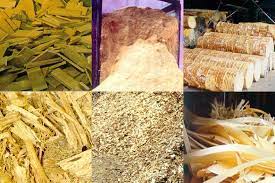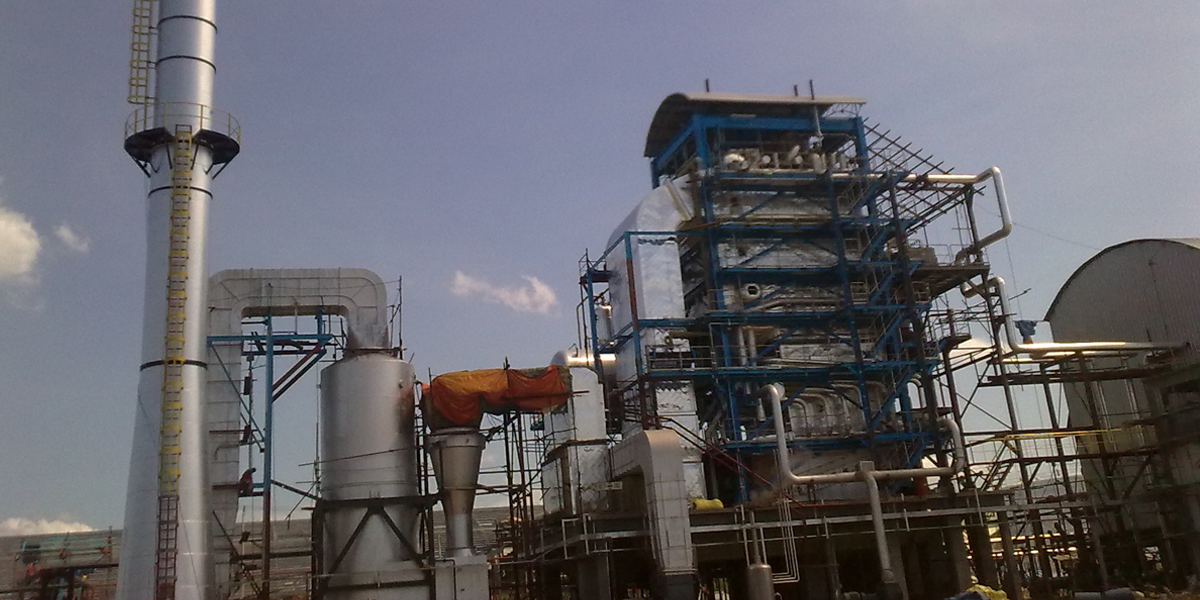Every year millions of tons of agricultural waste and forest residue is generated. Handing and transportation of this material is difficult due to low bulk density and thus it is inefficiently burnt or wasted. These wastes can provide renewable source of energy by converting them to high density fuel briquettes without addition of any binder.
What is Biomass?
All plants, including those from the sea and other water bodies, are considered to be biomass and are convertible to renewable energy by some means. The term refers to the leftovers that are not used for food or material; e.g. straw, corncobs, husks, animal waste, garbage. Biomass is all of the matter which is organic, contains carbon and has undergone photosynthesis and other processes. Biomass is mostly made up of plants which make use of the light from the sun to create energy through photosynthesis. Developing countries have large quantities of agro residues being handled inefficiently causing extensive pollution. Major residues include rice husk, coffee husk, coir pith, jute sticks, bagasse, groundnut shells, mustard stalks and cotton stalks. Sawdust, a milling residue is also available in huge quantity. Most of this biomass is wasted by being dumped into landfills or is burnt causing air pollution.
What is the Problem?
The aggregation window to collect the biomass is limited. This situation is further exacerbated by obsolete traditional usage of residue like roof thatch. Proliferation of mechanised farming leaves a very small window of transition for the farmers between harvesting and the next sowing.
A multi-pronged strategy needs to be adopted to drive the behavioural change in farmers’ community for extracting more value out of the farm waste.

Biomass Management – A way towards sustainability
The in-situ treatment of straw has long-term benefits like imporvement in soil health, reduction of fertiliser need and augmentation in farmer’s income. Shared infrastructure economy has a potential to provide the required machinery at an affordable cost, however the current capacities are not adequate to cater to all farmers.
It would be best to incentivise the farmers based on the cost-effective biomass management initiatives. Benefits should encourage incentivisation leading to better conformity by the farmers. Equipment can also be incentivised to grow the scale of such effort.
Government departments, financial institutions, agripreneurs and other likely stakeholders need to be a part of this movement for it to gain strength in order to upscale technologies with service-based shared economy and process-based incentives.
Planning medium to long-term action is the need of the hour in order to achieve zero-burning. Shared infrastructure would enable stubble shaving during combined harvesting and in-situ mulching of Biomass would bring long-term benefits to farmers in terms of soil management (by nutrient conservation and preventing soil erosion) and efficient use of fertilisers and water.

Implementation of technological solutions comes at a cost and returns on investment should be attractive and sustainable. However, some options do not provide monetary benefits in the short term but provide non-monetary benefits in terms of increasing soil fertility such as Biochar.

Bio-ethanol could become viable for commercial deployment in future and has potential to address the air-pollution in rural and urban areas at the time by diverting paddy straw to ethanol production and blending ethanol for cleaner transport fuel.
Demonstration plants for such technologies might need viability gap funding from the government. Details of these technologies and their costs will need an independent assessment from industry experts.
Rishikesh Deshpande, Managing Director and Project Consultant, Sustainable Biobrikets Pvt. Ltd




